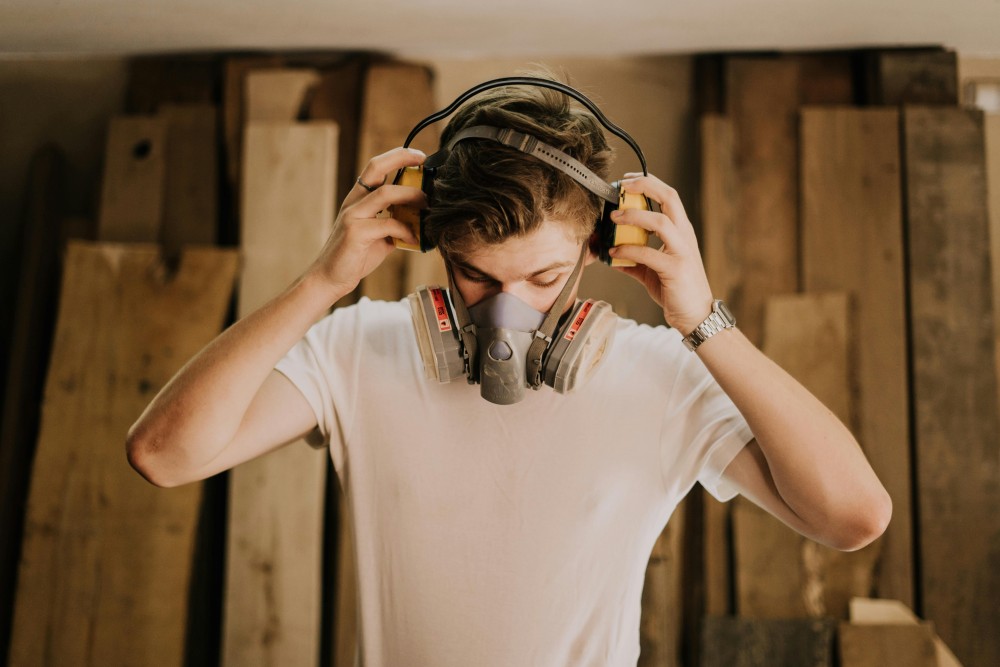
How Much Exposure To Wood Dust Is Dangerous?
While wood dust might seem harmless, it can cause serious health problems if inhaled. In recent years HSE has updated its EH40 Workplace Exposure Limits (WELs) which sets out the maximum exposure employees should have to a substance in the workplace. In this guide, we’ll explain the potential dangers of exposure to wood dust in the workplace, and outline how to combat it.
What is wood dust?
Wood dust, also known as sawdust, is created when machines or tools are used to saw, cut, plane, shape, or sand wood. Wood dust is present in all stages of woodworking and in businesses such as sawmills, furniture-making, cabinetmaking and carpentry. These industries generate large amounts of wood dust, increasing the risk of health issues from prolonged exposure.
Why Do WELs Matter?
The WEL limits serve as a guideline for employers to ensure that dust exposure remains at a safe level. Employers should make efforts to keep wood dust exposure below these levels, using dust control methods and ventilation systems.
What are the dangers of wood dust inhalation?
The risks associated with wood dust inhalation depend on a number of factors such as the length and intensity of exposure and the type of wood being processed. Generally, at a minimum, wood dust is likely to irritate the eyes, nose and throat and can cause coughing and difficulty breathing.
Exposure to softwood is known to be less dangerous than hardwood but can still cause irritation and illness. Some hardwoods like oak, mahogany and beech all have been associated with an increased risk of developing respiratory irritation and health conditions including;
- Occupational asthma: Studies show that prolonged exposure to hardwood dust has been linked to the development of occupational asthma.
- Nasal and sinus irritation: Not only can hardwood dust cause irritation to the nasal passages and sinuses but in some cases, it can develop into chronic sinusitis.
- Allergic reactions: Continued exposure to hardwood could potentially cause allergic reactions in some individuals, like rashes and hives. In severe cases it could even cause anaphylaxis.
- Nasal cancer: Tropical hardwoods have been associated with an increased risk of developing nasal cancer. This is rare but does have the potential of being serious when it occurs.
Increased Risks in High-Dust Environments
If you work in an environment where dust levels exceed recommended limits, these health risks increase significantly. Continuous exposure can lead to long-term respiratory issues and other serious health conditions.
Updated wood dust exposure limits
Both hardwoods and softwoods are considered dangerous when inhaled in large quantities, which is why the HSE has established WEL limits which must not be exceeded. The exposure limits are as follows;
- Hardwood: 3mg/m3 (based on an 8-hour time-weighted average)
- Softwood: 5mg/m3 (based on an 8-hour time-weighted average)
- Mixtures of hard and softwood: 3mg/m3 (based on an 8-hour time-weighted average)
The Importance of Controlling Wood Dust Exposure
Even if exposure is below the recommended WELs, it’s essential to keep wood dust levels as low as reasonably possible. Controlling exposure is key to preventing long-term health problems.
How to Control Wood Dust Exposure:
- Effective Ventilation Systems: Invest in high-quality dust extraction systems.
- Use of Personal Protective Equipment (PPE): Workers should wear dust masks and protective clothing when exposure is high.
- Routine Air Quality Testing: Regular monitoring of dust levels in the workplace is critical for safety.
How can Purex help?
Here at Purex, we have 40 years of experience in supplying fume and dust extraction over a wide range of industries, providing clean air for everyone.
Our connections in the industry mean we’re equipped to recommend the wood and heavy dust extraction that’s best suited for your needs. And what’s more, our qualified technicians are able to install and set up your LEV system for you. Our high level of service is why we’re known for our quality LEV testing. We’ll test any LEV system for you, even if it’s not a Purex model.
Additional Purex Solutions for Wood Dust Control:
- Periodic LEV maintenance and upgrades
- Bespoke Clean air systems
- LEV testing & compliance
Contact our helpful team today for more information on how we can help. If your current LEV system needs servicing, you can easily book your next LEV test with our team.
Latest insights
-

How Fume Extraction Improves Workplace Health and Safety
If you’ve ever worked in an industrial environment, you know that the highest priority is health and safety. ... Read more -

Purex International Creates 7 New Jobs in Brough – Including Apprenticeships for Local Talent
Brough, East Yorkshire – Purex International is proud to announce 5 brand new full-time job openings and 2 apprenticeship roles at our manufactu... Read more -

A Day in the Life at Purex: How Every Team Drives Our Customer-First Approach
At Purex, everything we do is shaped around the customer, from the way we start each morning to how we wrap up the day. Our 40-year mission to deliver... Read more
How Purex can help
We provide an excellent level of service and support, including our 24-hour technical support service and start-to-end projects. Get in touch with our expert team today to find out more.